Shopping Cart
You find a coffee that you fall in love with. It’s the best tasting cup you’ve ever tried. You take your new-found coffee home… and after a week it doesn’t taste at all as good as it used to. So the question is: How are you storing your coffee? Keep reading for the best storage tips to keep your coffee tasting like it should!
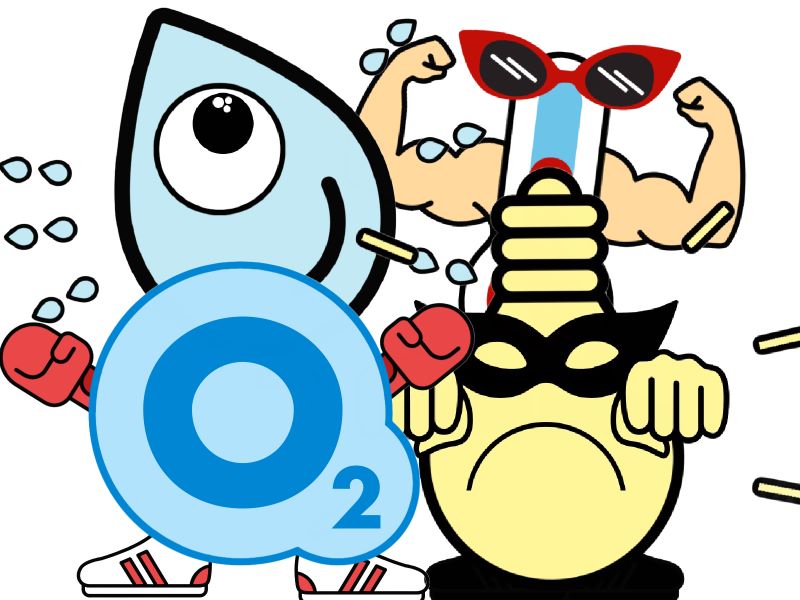
There are many environmental factors that can alter the flavour of your beans. But a few common factors can affect the freshness of your coffee beans much more than expected. Proper storage of your coffee will keep your beans fresh and delicious for weeks. But first, it helps to know some fresh coffee enemies.
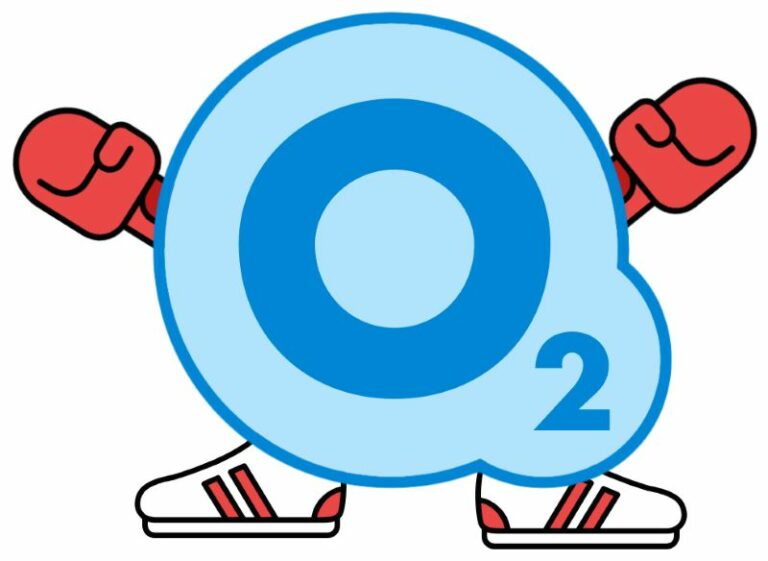
The first enemy to coffee storage is oxygen. Oxygen is a necessary factor for all life as we know it. But exposure to oxygen over time affects the flavour of your coffee. Every coffee bean contains oils, acids, and chemical compounds that we call “solubles”. Many of these solubles are what give coffee its amazing flavour. These solubles begin to degrade when exposed to the oxygen in the air. You’ll especially notice this with coffee that is pre-ground.
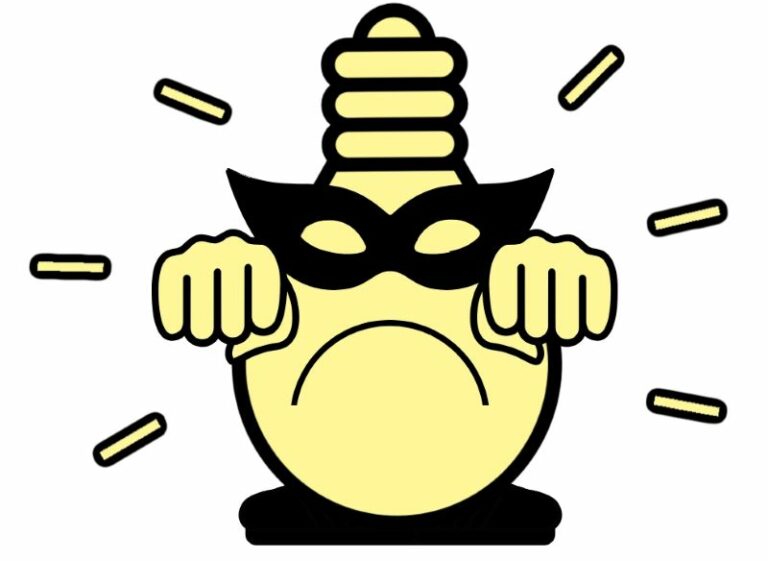
The second coffee storage enemy is being exposed to light. Light exposure is also called “photodegradation”. It’s the phenomenon that occurs when the energy in light waves start to erode a physical object. You may have noticed this in an old painting or a faded umbrella. Photodegradation also speeds up the oxidation process in your coffee.

Moisture is the third coffee storage problem. Wet or damp conditions definitely will have a negative effect on your coffee beans. If your coffee beans get wet they can grow mold, making the coffee unsafe to drink. Storing your coffee beans in a dry place is imperative. Humidity refers to the moisture that exists in the air. It can be hard to control humidity depending on where you live.
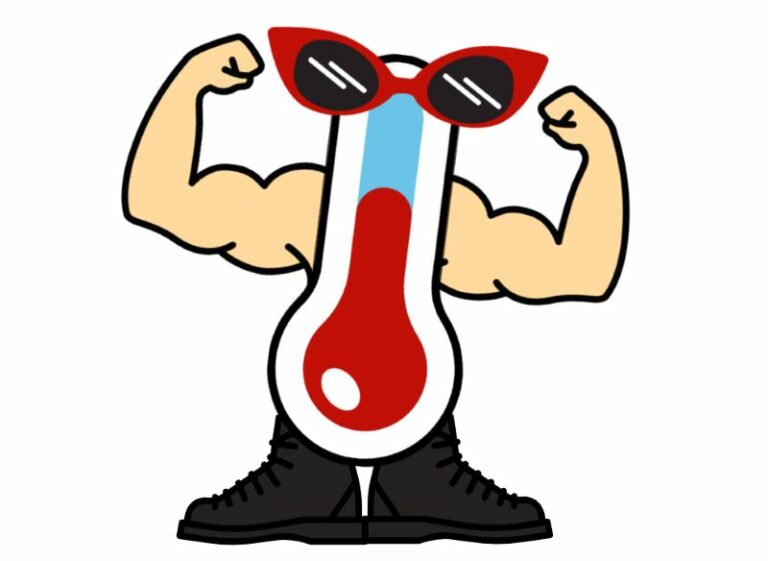
The fourth coffee storage problem is temperature. Temperature fluctuations change the coffee beans’ chemical structure. Storing coffee above room temperature can speed up the aging of your bean. Heat will also increase the rate that C02 and oils leave the bean’s surface. On the other end, storing coffee in too cold of temperatures can leave your cup tasting flat and unpleasant.
Now you know what to watch for to keep your coffee fresh. Next we’ll go over some great ways to avoid the coffee enemies. Here’s some great tips for coffee storage (and other foods too!)
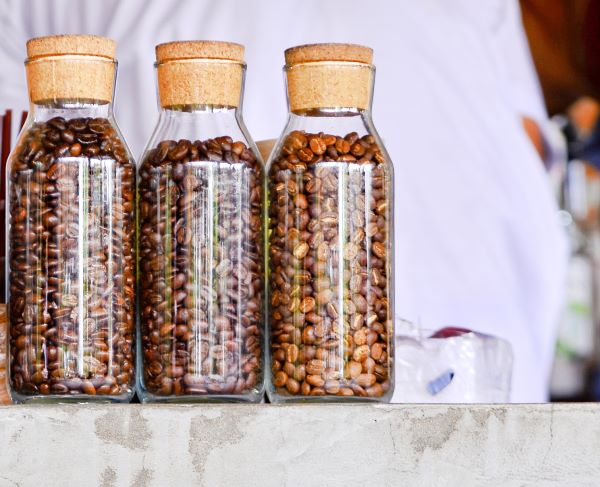
To keep coffee safe from photodegradation, it’s best to keep it away from direct sunlight. If you are storing your coffee in an opaque container, you can keep it on your counter at your coffee station. However, if your coffee canister is clear plastic or glass, you should keep it tucked away in a pantry or cupboard. Darkness is definitely preferable for the best freshness.
An airtight container will keep your beans safe from oxidation and moisture exposure. There are many airtight options for storing your coffee. In this section we go over a few of our favourites.
When you buy fresh roasted Cupper’s coffee, we seal it in our custom designed, recyclable bags. The bags have a fresh seal zipper on top to keep any air from escaping. They also have a semipermeable air valve on the back. This allows the C02 in the coffee to escape, without letting any oxygen into your coffee. As two bonuses, you can reuse them in our store*, and when you’re done they are #2 bin recyclable in Lethbridge. *(Extra Bonus: you get a small additional discount when you refill your bags at Cupper’s Coffee & Tea!)
Planetary Design Airscape Containers come in plastic, glass, metal, and ceramic. There is a variety of sizes and colours to suit any decor as well. The unique part of their design is they all have two lids. The first, inner lid has a patented valve that allows air to escape before sealing, and goes right down to the height of the stored items. This means there’s no extra air in the canister to go stale on you. The second outer lid is often clear, allowing you to see when you need to restock your coffee. This is a huge improvement on many coffee containers that trap harmful air in with your beans.
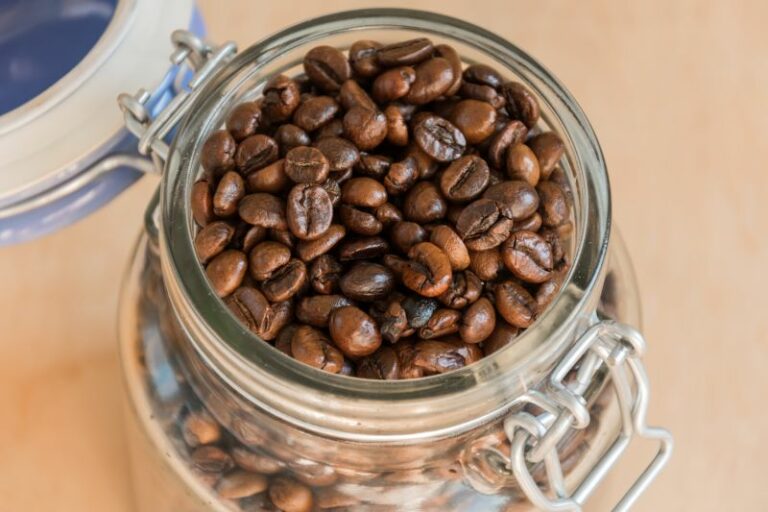
If you have a favourite container that works as coffee storage, feel free to use that. We’re big fans of using what you already have. If you haven’t seen a degradation in the quality of your coffee, don’t feel pressured to get something new. Basically, don’t fix what’s not broken.
Always keep your coffee in a place where it will be safe from light, temperature, and humidity changes. For these reasons one of the best places to store your coffee is in your pantry.

Many people have their coffee storage in their freezer to keep it fresh. We don’t recommend this for several reasons:
The moisture content in a freezer is often higher than is good for coffee. You wouldn’t store coffee in the freezer for the same reasons that you wouldn’t store flour in the freezer.
Another problem is the negative effect that temperature change has on coffee beans. It can change the flavour as it is cooled and warmed repeatedly.
Freezers are notorious for their flat, stale smell. Coffee is an excellent absorber of odours. That’s why soap and perfume shops often have small trays of coffee beans around. No one wants their coffee to taste like the inside of their freezer.
Having said this, the freezer can be an excellent place to store coffee. But if you want to store your coffee in your freezer, consider a few key factors. First, make sure that your coffee storage container is completely 100% airtight. Second, you need to thaw the beans well in advance of using them, not immediately before brewing coffee. When thawing your beans they are best kept away from light and air. Third, examine the beans for any trace of water before putting them in your grinder. Remember, condensation can happen on any cold object, and is terrible on coffee grinders!
Even with all this care you still may experience a flat flavour from the changes in your beans. Often it’s simpler and easier to keep your coffee in a pantry or cupboard.
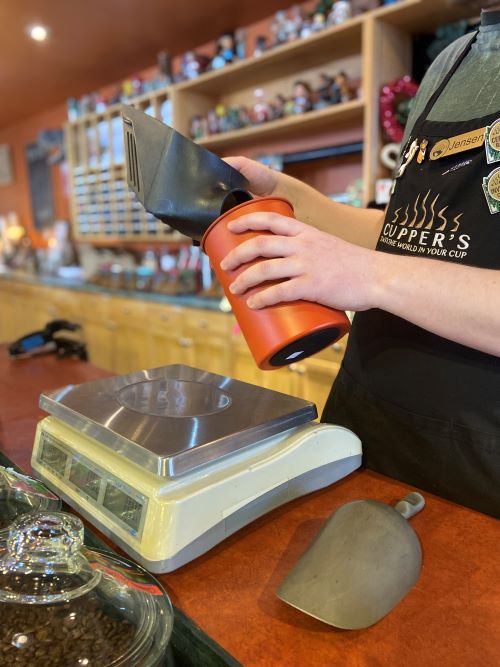
When buying coffee it’s important to remember the environmental impact of your packaging. Of course you want to keep your coffee fresh, but you should also be mindful of what you may be adding to the landfill. Look for coffee packed in recyclable or compostable materials. Many coffee shops will also allow you to reuse your storage containers. And if you bring in your own container or reuse our Cupper’s coffee bags, you’ll also get a discount for that coffee!
Cupper’s Coffee & Tea has made a commitment to shrinking our environmental footprint. That’s why all our coffee comes in bags that are #2 recyclable. Check out our sustainability efforts in Cupper’s Coffee Roasters, Keeping it Green.
Coffee is a shelf stable product and doesn’t go bad or expire. But while it doesn’t spoil, it can definitely loose freshness and flavour. With more time (and bad storage!) it can become musty, stale, flat or otherwise taste terrible. When coffee passes its best before date there will be some key indicators that it’s no longer fresh. In this section we will go over some quick indicators that your coffee is stale.
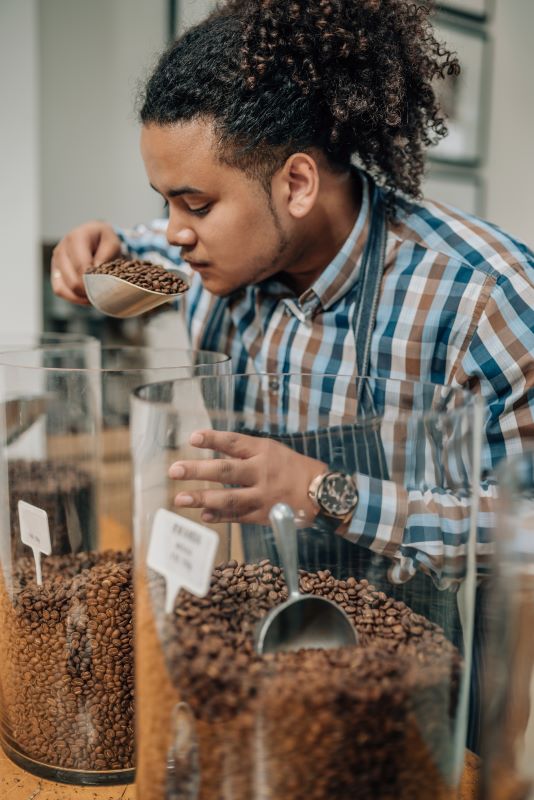
The first and easiest step to checking your coffee’s freshness is to smell it. Fresh coffee will have a pleasing rich and smooth aroma. Coffee that has aged out will smell more musty or like cardboard. Trust your sense of smell. If your coffee doesn’t smell right, it’s likely not fresh coffee.

As coffee beans age the natural oils in the beans come to the surface. This is normal in a dark roast, but not something that should appear in a medium roast. A very shiny or oily bean from a medium roast is a good indicator that your coffee storage is inadequate. As mentioned earlier, oxidation speeds up this aging process in your coffee.
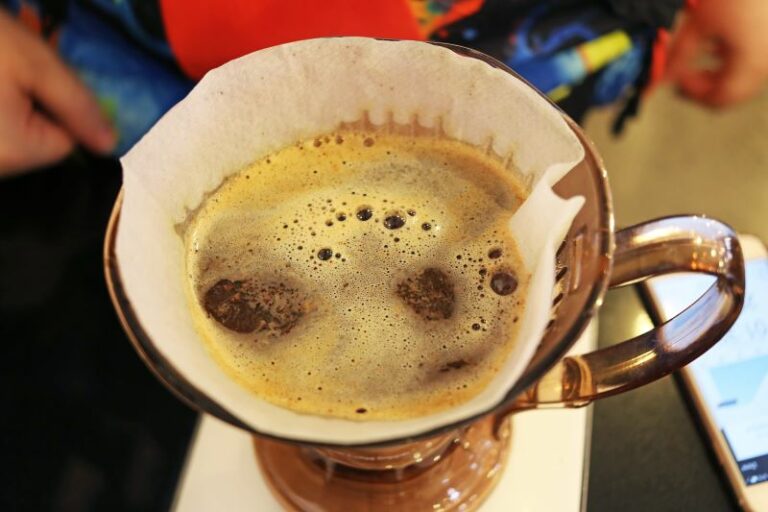
If you’ve ever made a pourover with fresh coffee, you know that the grounds ‘bloom’ when you first pour water on them. The bloom is the burst of bubbles that erupt from the grounds. If you pour your hot water too fast, your coffee (and grounds!) will froth over the top of your carafe and make a big mess. This is because fresh coffee grounds release C02 as the hot water hits them. So a great way to test the freshness of your ground coffee is to brew it. If you’re not noticing a big, bold bloom, it is likely that your coffee is older, or the storage is poor.
In conclusion, if you want to keep your coffee safe from the elements you need to invest in a good storage solution. The best advice is to keep your coffee in an airtight container in a cool and dry place. We don’t recommend keeping your coffee in the freezer to keep it fresh. There’s a host of better options that will work for you with minimal effort. And you’ll get better tasting coffee, which adds great value!
Storing your coffee beans in the freezer is not recommended. Moisture, humidity, and temperature have a drastic effect on the freshness of coffee. And the absorption of aromas from the freezer can affect the flavour of your coffee. No one wants to drink coffee that tastes like freezer burn!
While coffee does not have an expiry date, it will start to degrade over time. Well stored coffee can last more than a month from the roast date. While it may not have the bloom of fresh roasted coffee, the flavours do last better in good storage.
We recommend storing your coffee in an airtight canister in a cool dry place. Our favourite storage combo is a tightly-sealed Airscape in the pantry.
Coffee does not have an expiry date. As long as it hasn’t come into contact with moisture and doesn’t appear to have mould on it it should be safe to drink. The flavour does degrade over time, so a 5 year-old coffee will have little or very compromised favour.
"Working with Cupper's was an amazing experience, they listened to our needs and created a thoughtful blend keeping our clients in mind!" Parkinson Association of Alberta
Shop our exceptionally roasted coffee beans online.

Ethically Sourced and
Meticulously Roasted Coffee Beans
Phone: 403 380 4555
Regular Store Hours:
Mon – Fri: 9:00 am – 5:30 pm
Sat: 9:00 am – 5:00 pm
For Pick-ups:
Mon – Sat: 11:00 am – close
1502c 3rd Avenue South,
Lethbridge, AB T1J 0K8